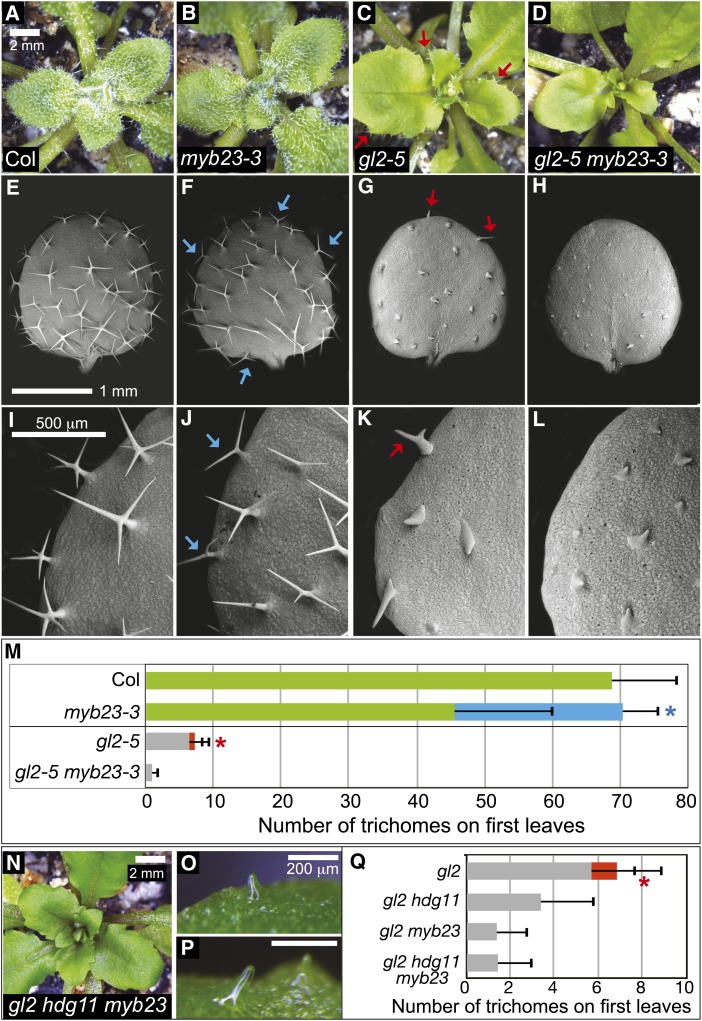Figure 3.
Enhanced Trichome Differentiation Defects in the gl2-5 myb23-3 Double Mutant and the gl2 hdg11 myb23 Triple Mutant.
(A) to (D) Rosettes from 3-week-old plants.
(A) and (B) Col wild-type (A) and myb23-3 (B) plants display trichomes covering leaf surfaces.
(C) and (D) gl2-5 plants display trichomes at leaf margins (arrows) (C), while gl2-5 myb23-3 double mutants exhibit glabrous leaves (D).
(E) to (L) Scanning electron micrographs of first leaves reveal trichome morphology details.
(E) and (I) Col wild-type trichomes display three to four branches.
(F) and (J) myb23-3 trichomes exhibit two to three branches. Arrows mark abnormal trichomes with two branches.
(G) and (K) gl2-5 trichomes display differentiation defects, although some trichomes at leaf edges show branching (arrows).
(H) and (L) gl2-5 myb23-3 double mutants exhibit small undifferentiated trichomes that lack branching.
(M) Quantification of trichomes on first leaves. For Col and myb23-3, green bars indicate the number of trichomes with three to four branches and the blue bar indicates the number of abnormal trichomes with fewer than three branches. For gl2-5 and gl2-5 myb23-3, gray bars show the number of unbranched trichomes while the red bar indicates branched trichomes. Positive error bars indicate sd for n ≥ 20 plants, and asterisks indicate significant deviations in trichome branching (two-tailed t test, P < 0.0001).
(N) Rosette from a gl2-5 hdg11-1 myb23-3 triple mutant.
(O) and (P) Details of leaf trichomes from the triple mutant.
(Q) Quantification of trichomes on first leaves as in (M) from gl2-5, gl2-5 hdg11-1, gl2-5 myb23-3, and gl2-5 hdg11-1 myb23-3.

